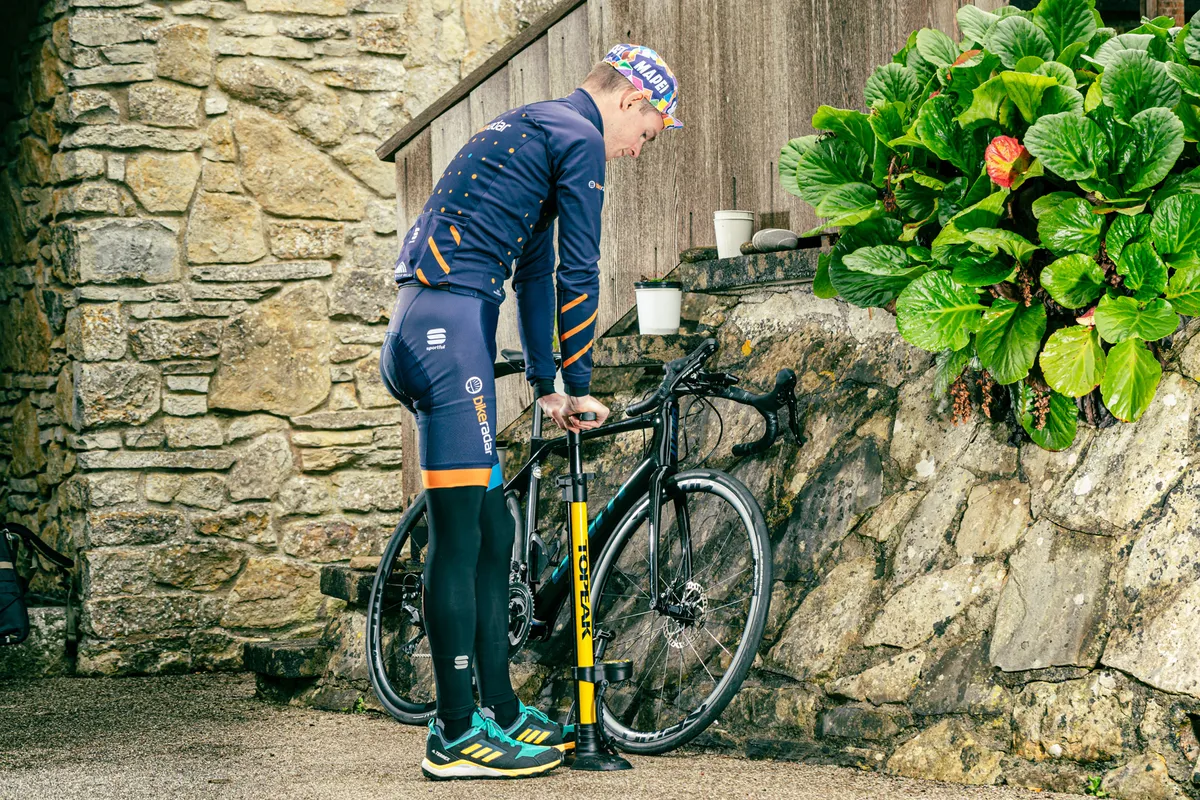Josh Poertner has doubled down on his recent statements concerning hookless rims for road bikes, saying he wouldn’t use the technology or work with cycling teams that did.
Following BikeRadar’s coverage of his original comments, where he claimed road hookless rims are “a scam”, Poertner recently posted a video on the Silca Velo YouTube channel expanding on the topic.
In the video, he says “scam was a bit of a strong word” but he nevertheless wants “to see [hookless rims for road bikes] go away”.
“Would I ride hookless road [bike rims]? No, I won't. I don't recommend it. I don't want to work with teams who have it,” he says.
Poertner, a former chairman of the Bicycle Wheel Technical Committee and now CEO of Silca, says he wouldn’t work with professional teams that use hookless rims, because “it is just a bit too risky”.
He says riders using hookless rims on their road bikes should “be super careful”, and explains why he believes the current standards for such rims don’t provide riders with enough margin for error.
If you're on it, be super careful

Poertner reiterates that he doesn’t view hookless rims as being a problem for mountain or gravel bikes, because the tyres typically used in those disciplines are much larger and inflation pressures much lower.
With road bike tyres, though, Poertner lists a combination of factors that he says makes hookless rims potentially unsafe for use on road bikes, because of a lack of margin for error.
A key issue, Poertner says, is that there’s little consistency with how road bike tyres are sized.
Pointing to data collected by bicyclerollingresistance.com, an independent bicycle tyre test lab, Poertner says that tyres labelled as being ‘28s’ can vary in size significantly, depending on how they are constructed.
So, for example, while a nominal 28mm tubeless road tyre may be technically compatible with a 23mm-wide hookless rim (internal width), according to the latest international standards, a tyre that sizes up smaller on such rims “potentially will reduce the blow-off pressure significantly”.
A 700x28c or 28-622 road bike tyre is supposed to measure 28mm-wide when installed on a rim with an internal width of 19mm. But Poertner proposes that instead of basing tyre sizes around nominal rim widths the bike industry should move to a system such as the dD Standard, proposed by Josh Deetz.
According to Poertner, the dD Standard derives “that sidewall width number from the circumferential wrapped length of the tyre casing”, which would allow for more consistent tyre sizes across brands, and would lower the chance of riders selecting a potentially unsafe tyre and rim combination.
Why tyres need to be wider than rims

Poertner expanded on his assertion that hookless rims need to be wider than is optimal for aerodynamics, saying this is to prevent tyres from blowing off the rim.
Poertner says this is because “air pressure on the tyre acts radially to the tyre itself.” As a result, you therefore “need that tyre to wrap around and actually be coming inward as it gets to the hook so that you have some radially inward force.”
In absence of this, Poertner says “all of the forces, as the tyre becomes smaller relative to the rim, are all acting to push that tyre off the rim – which is just not safe.”
Using a diagram to illustrate his point (see above), Poertner says that the pinching of the tyre caused by bead hooks is part of what enables hooked rims to withstand such high inflation pressures (without the tyre blowing off) relative to hookless rims.
“With hooked rims, you can generally safely get to 125 per cent of the max stated air pressure when you have a tyre that is 3mm wider than the inner bead width of the rim.”
In comparison, the ETRTO mandates a tyre must be at least 4mm wider than the internal width of a hookless rim and the maximum inflation pressure is capped at 72.5 PSI / 5 BAR. Poertner says he “would not run less than a 5 mm gap”
Why your pump might not be accurate enough

Compounding these issues, Poertner says the lower inflation limits don’t account for potential inaccuracies in the bike pumps riders use to inflate their tyres.
Poertner claims, for example, that a “typical inexpensive bike pump” will have an error band of +/- 5 per cent from the stated pressure on the gauge.
A rider inflating their tyres close to the 72.5 PSI / 5 BAR limit might therefore unknowingly be over the limit if their pump is underreporting the true pressure.
He also cites how errors such as this could, in theory, compound with tyre pressure changes experienced while riding, due to fluctuations in ambient temperature, which “just keeps pushing us closer and closer to the sun.”
Summing up his arguments, Poertner says: “I feel like it's just too risky when you consider that there's no real technological benefit to it.”
What does the rest of the bike industry think about hookless rims?
After a few years where it appeared as if the debate surrounding hookless rims was dying down, Poertner’s comments have thrust it firmly back into the spotlight.
As he predicted, Poertner says his inbox was “full” of messages from riders from inside and outside of the bike industry asking him to clarify his thoughts on the topic.
It’s worth noting not every brand or person within the industry agrees with Poertner on this topic, of course.
Since publishing our article on Poertner’s original comments, we’ve spoken to a number of people and brands within the industry and will have more insight to share on this topic soon. Watch this space.
